Most common lie: "I'm fine"
Recently I saw a new English solution map made by a foreign website
I'm fine.
The most common lie.
I applaud this new approach to debunking false everyday interactions. This is also what often happens when I pretend to be a "normal person".
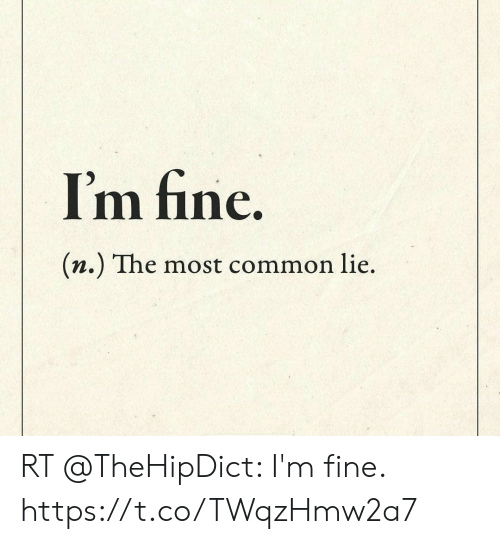
When others may casually ask "Are you okay?"
When you are really in a bad state, will you reply: "I'm not good"?
Or can you really be "brave" to expose "I'm not good"? ? ?
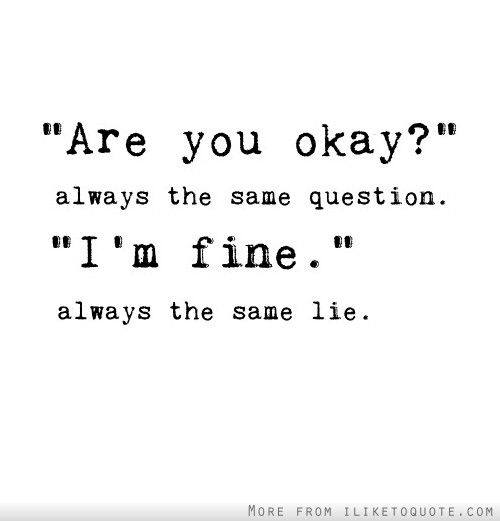
If you really respond so honestly, it is very likely that the person who asks will not know how to respond (or be dumbfounded), and will be confused. (But this is also due to the lack of emotional education in the current society, resulting in ordinary people not being taught how to accompany people who are emotionally troubled)
Because people who are deeply emotionally troubled are also reluctant to see other people's overwhelmed reactions, in addition to not wanting to cause others to be troubled, seeing such reactions will still hurt to some extent. So the most often mixed responses are: "I'm fine" or "I'm fine."

"How are you?"
"I'm fine" or "I'm fine"
This type of everyday lying, which is most commonly encountered by emotionally troubled individuals, presents two dilemmas, both internal and external:
External social and cultural dilemmas, mainstream society cannot accept or respond to people who are in poor physical and mental state. Mainstream society only establishes interaction in the order of normal people, and has not developed a way to accept and respond to those who are emotionally troubled or physically and mentally disordered. They are even still labeled with stigmatizing labels such as "poor pressure resistance" and "unstable".
For internal dilemmas, in order not to destroy the connection with "normal people" or the normal order, the emotionally troubled people often have to suppress their own feelings or cover up their fragile state, "pretend to be good and normal", and avoid social criticism. own stigma.
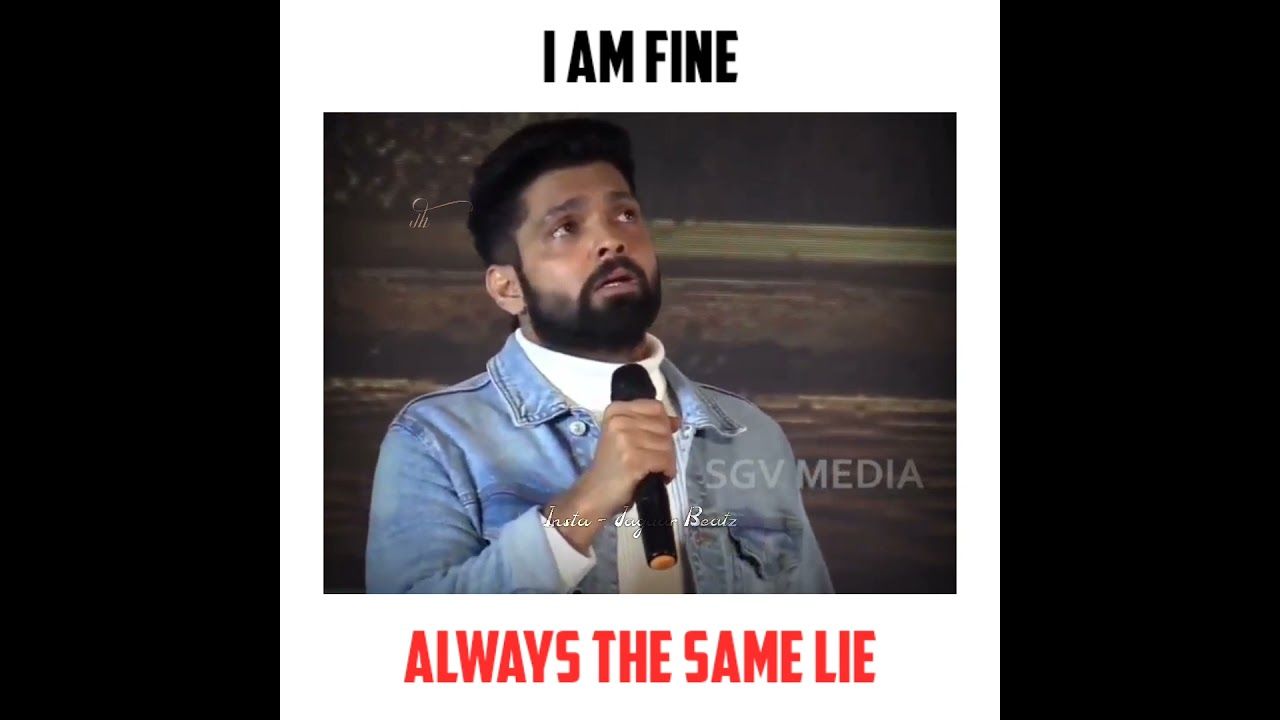
Cognitive dissonance caused by internal and external dilemmas, and behaviors that attempt to compromise
How do emotionally troubled people mediate the internal and external dilemmas they face. At this time, I think the theory of "Cognitive dissonance" in psychology can provide a partial explanation (the following definition is taken from Wikipedia )
"Cognitive dissonance" is used in psychology to describe people having conflicting cognitions and observing opposing messages. These messages include human behavior, emotions, thoughts, beliefs, values, beliefs, things in the external environment, etc. Cognitive dissonance usually manifests as psychological stress or anxiety resulting from behavior that is inconsistent with one's own thoughts, values, or self-concept. According to the theory of cognitive dissonance proposed by Leon Festinger, in order to relieve the pressure and discomfort of cognitive dissonance, people will try to change conflicting cognitions and make their cognitions reconciled.
The theory of cognitive dissonance has three basic assumptions about human cognition: (The following definition is taken from Wikipedia )
1. People all have the need to pursue the consistency of the three elements of cognition (self, others, an element or thing).
2. When cognitive dissonance occurs, people experience psychological discomfort.
3. Psychological discomfort drives people to resolve cognitive contradictions in order to restore cognitive harmony.
I have found that some people (including me) tend to seek cognitive coordination in the face of inner depression and conflict in the face of social disguises:
1. Don’t want to completely pretend I’m fine, don’t want to lie and deceive yourself
→→ According to the theory, when cognitive dissonance occurs (don’t want to pretend I’m fine to the outside world), people will feel uncomfortable in their hearts (don’t want to lie and deceive themselves)
2. However, we can’t fully reveal that we are really not in a good mood. Under the measure, we will develop a balance of social expressions to treat ourselves with foreign affairs, such as “I’m okay”, “so so”, “ Life is like this", "It's okay", "It's okay", "Popular", "Nothing special", "So-so", "Maybe a little low tide"
→→ According to the theory, psychological discomfort will drive people to resolve cognitive contradictions, develop a statement that attempts to mediate internal and external dilemmas, and restore cognitive harmony as much as possible. Develops a compromising term between not wanting to pretend to be nice and disguising one's true social relationships
However, there are also some people whose mood is really stable. They don’t have too many emotional ups and downs. Life has no great or bad influence on them. Such stability may have a different evaluation for everyone. It’s just that for someone like me who is troubled by emotions, it is the best state to be able to have a stable mood and live in the moment and work hard.
✔ Beware of seasonal blues
In fact, I wrote this "Most Common Lie: "I'm Fine" in October, hoping to serve as a reminder to others. Because of the transition of autumn and winter, the change of seasons is an important factor that triggers seasonal depression, which makes some people feel bad in autumn and winter, or their physical and mental symptoms recur or aggravate. I hope readers can care more about the people around them or love themselves more, improve their sensitivity to the emotions of those around them, break this false daily lie, and truly perceive those who need care and give instant warmth.
The fifth of 40 pieces of advice for living in the book Reasons to Live by British author Matt Haig, who became a melancholic at the age of twenty-four, mentions:
Watch out for Tuesday and October.
For other suggestions, please refer to this article "Reason to Live": 40 Advice for Depressed Patients to Live | cacao
This article was shared several times by friends in the field of psychology in my online community, and the most controversial one was Article 5. Why be careful about Tuesdays and October?
There is no conclusion about the interpretation of Tuesday, and this article will not discuss it. However, there is a consensus that:
Seasonal change can cause or aggravate the symptoms of depression. October is the most autumnal, and it is easy for others to feel the change of seasons and the passing of the year.
In my experience, in a subtropical climate like Taiwan, the biggest difference between the seasons is autumn and winter. In addition to the significantly lower temperature experienced by the body, the obvious shortening of sunlight (for example: it gets dark earlier) makes the emotionally more sensitive. People feel their own instability. Depressed patients need sunny weather, which stimulates the brain through visual stimulation to increase serotonin function.
You can refer to this " Insufficient Sunlight Beware of Winter Melancholy "
Therefore, like senior patients with psychosomatic disorders, they attach great importance to taking better care of their physical and mental stability during the autumn and winter seasons when the sunshine is shortened, and contact the psychiatrist to make arrangements to sign and prepare medicines.
However, the last point of "Reason to Live" advice should be remembered:
Be brave, be strong, breathe and live. You will thank yourself for today.
Finally, I listed a few pictures I found on the Internet. I think it is interesting to interpret "I'm fine. The most common lie." (there are many pictures below)
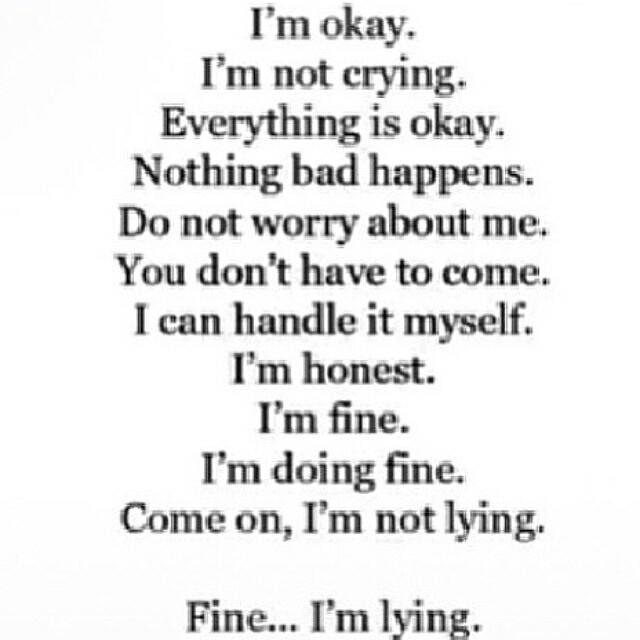
The image above is blurry, the text is attached below
I'm okay.
I'm not crying.
Everything is okay.
Nothing bad happens.
Do not worry about me.
You don't have to come.
I can handle it myself.
I'm honest.
I'm fine.
I'm doing fine.
Come on, I'm not lying.
Fine... I'm lying.

The following set of memes vividly describe the negative emotions that people hide and suppress when responding to "I'm fine."
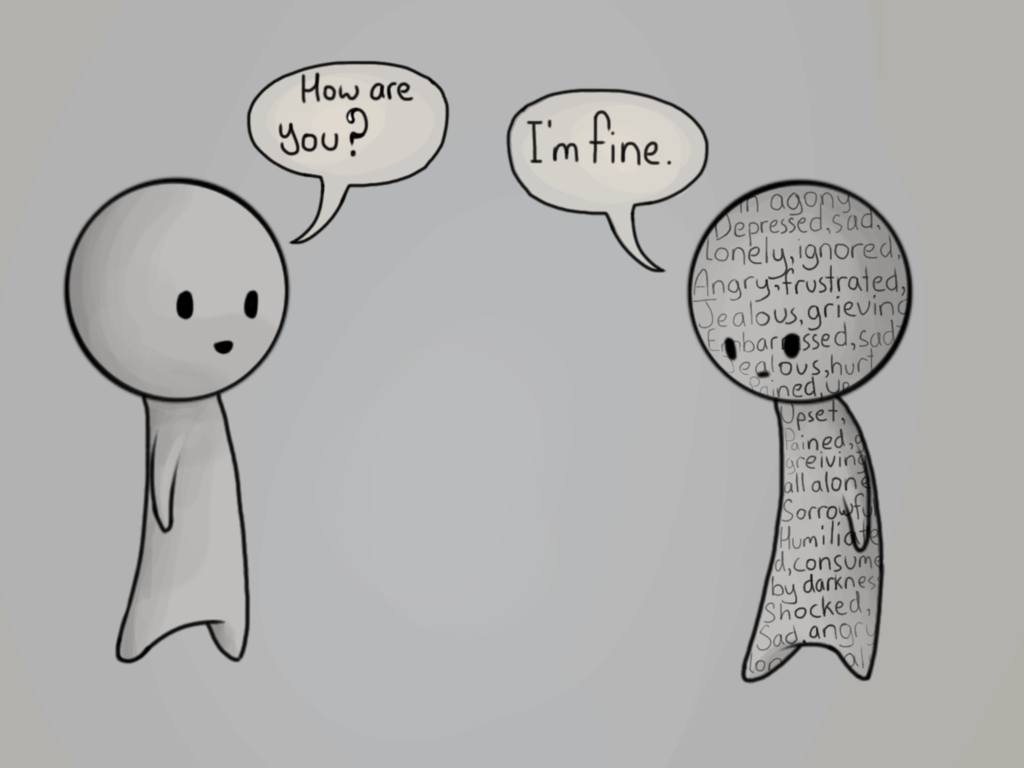

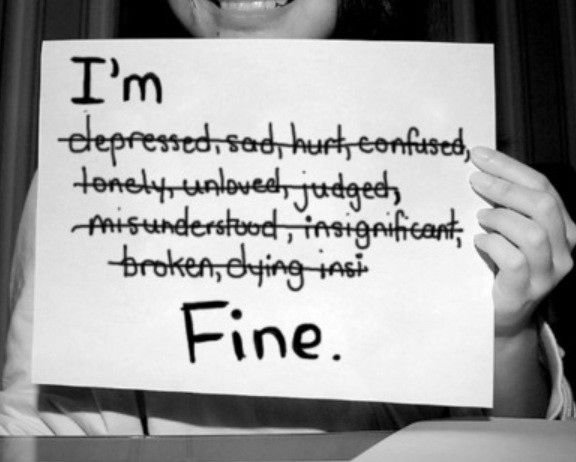
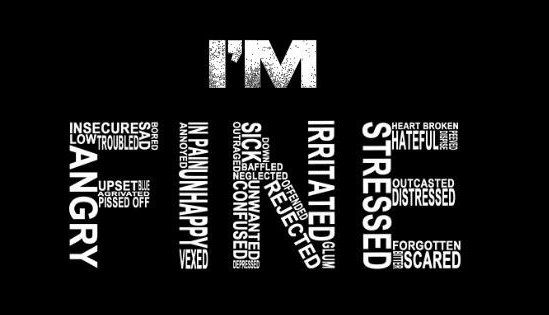

I have briefly listed a few of the emotional words that appear in these memes to help readers understand the meaning.
By understanding the signals and emotions behind the lie "I'm fine", it can also help you identify the emotional state of yourself and those around you. (Limited to the length of the article, this article will not list the text of all pictures)
Hidden help signal: HELP ME
hidden negative emotions
I"m......
depressed
sad
hurt
confused
frustrated
lonely
unloved
judged
misunderstood
insignificant
heart broken/ broken
dying
insecure
sick
unwanted
stressed
distressed
scared scared
forgotten
neglected
rejected
offended
irritated
angry
unhappy
vexed troubled
down depressed
glum sullen
baffled
in pain
hopeless
helpless
sorrowful
tired
miserable
wounded
empty
low
injured
vulnerable
But at the end of the article, I still give my blessing:
I hope that when people are vulnerable and emotionally troubled, someone can catch them.
I hope that one day, people will be able to say "I'm fine," instead of pretending to be normal.
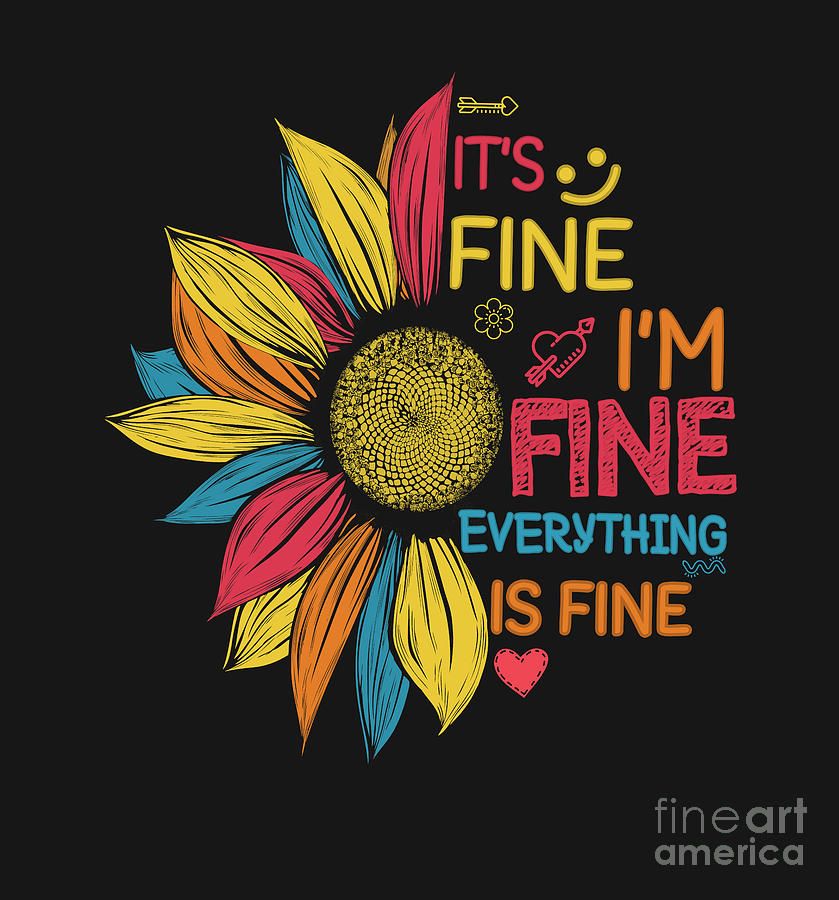
Introduction to "Listening to Depression" <br class="smart">I am Ye Yucan, a depression patient who has been standing on the edge of a psychological cliff for many years. Many years ago, I thought about how to make the outside world understand the inner suffering of depression patients. Those who have passed can't imagine the same. But I was very timid, afraid that the internet would be swept away like a mad dog, and I didn't write for many years. In the two years that the epidemic has swept through, I always have the anxiety of "it's too late to say it". I hope that I can be like a "real-life library", so that outsiders can understand the mood of patients with depression through my sharing.
Like my work? Don't forget to support and clap, let me know that you are with me on the road of creation. Keep this enthusiasm together!


- Author
- More